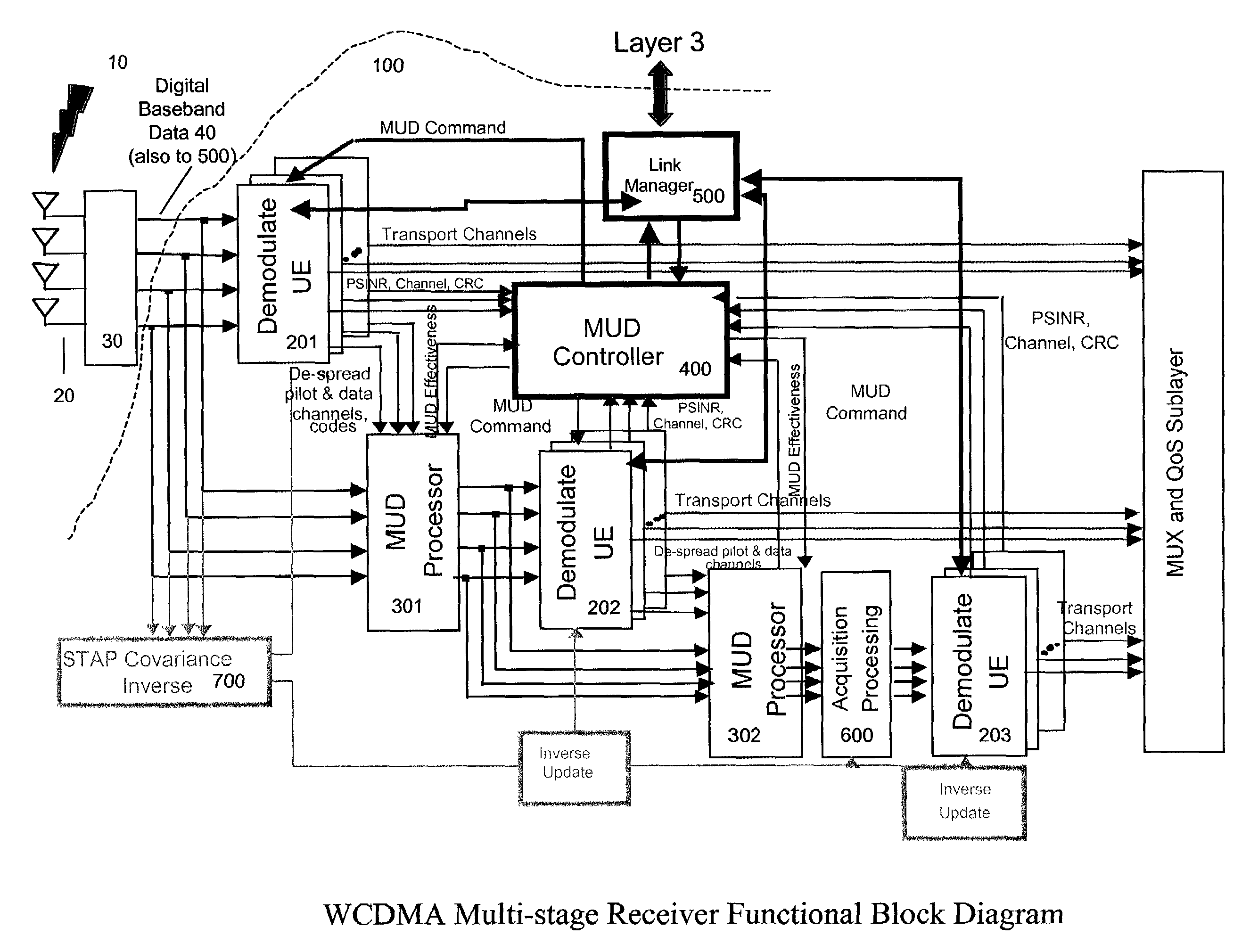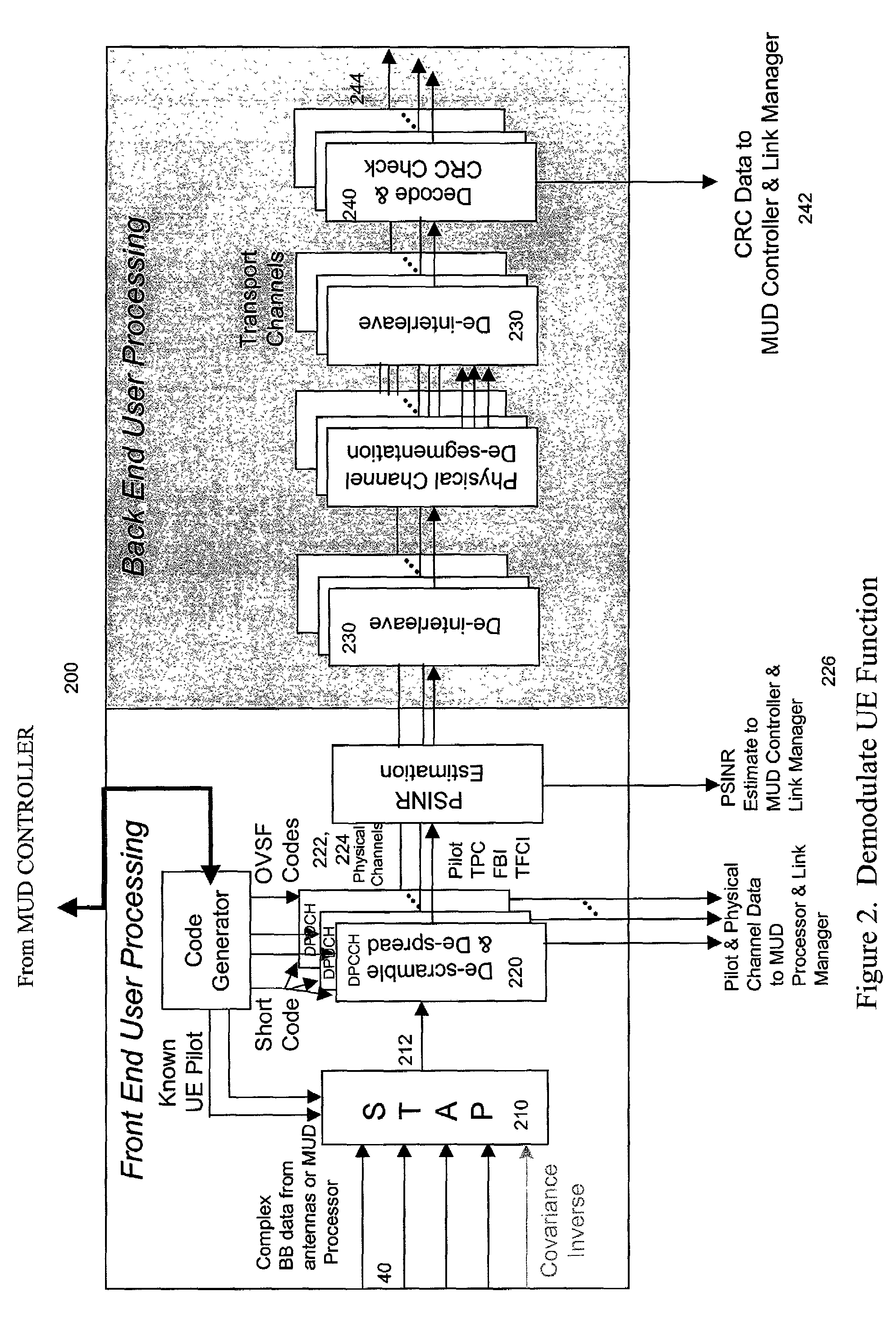Multistage reception of code division multiple access transmissions
a technology of multiple access transmission and code division, applied in multiplex communication, power management, wireless communication, etc., can solve the problems of limiting the capacity and performance of code division multiple access (cdma) wireless services, reducing gain, and limiting the capacity of those applications, so as to reduce multiple access interference and reduce multiple access interferen
- Summary
- Abstract
- Description
- Claims
- Application Information
AI Technical Summary
Benefits of technology
Problems solved by technology
Method used
Image
Examples
Embodiment Construction
[0039]Referring to FIG. 1, a WCDMA receiver architecture 100 is disclosed that includes a space-time adaptive processing (STAP) and multi-user detection (MUD) filter architecture, a MUD Controller 400 that allocates MUD processes to in-cell users and users in soft handoff, and a Link Manager 500 that levies real time requirements on radio resource and quality of service (QoS) management algorithms in a base station. The architecture enables elements of the receiver (filters, MUD Controller 400, and Link Manager 500) to operate in a manner that offers improvements in performance measures such as interference mitigation, signal equalization, and signal fading compensation in accordance with near-real-time assessments of network loading and quality of service mix, and physical channel conditions.
[0040]The WCDMA receiver architecture provides a nominal 5×base station capacity increase over the conventional WCDMA de-spreading and demodulation processing as specified by the Third Generati...
PUM
 Login to View More
Login to View More Abstract
Description
Claims
Application Information
 Login to View More
Login to View More - R&D
- Intellectual Property
- Life Sciences
- Materials
- Tech Scout
- Unparalleled Data Quality
- Higher Quality Content
- 60% Fewer Hallucinations
Browse by: Latest US Patents, China's latest patents, Technical Efficacy Thesaurus, Application Domain, Technology Topic, Popular Technical Reports.
© 2025 PatSnap. All rights reserved.Legal|Privacy policy|Modern Slavery Act Transparency Statement|Sitemap|About US| Contact US: help@patsnap.com



